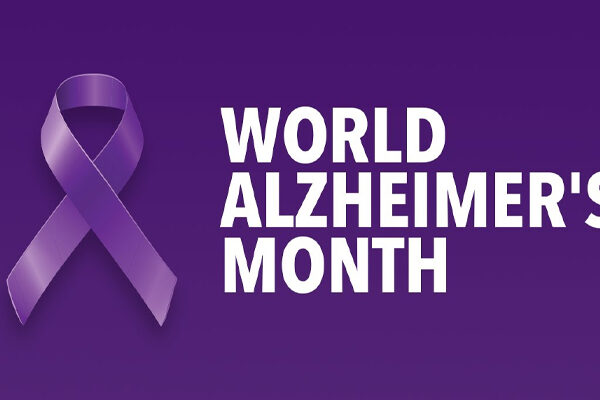One of the most common forms of childhood epilepsy doesn’t happen in the classroom or playground, it often starts while the child is sleeping. This neurological condition is known as Rolandic Epilepsy, and it affects thousands of children worldwide, yet it often remains misunderstood.
Before we dive deep, here’s a fact to get you thinking — kids with Rolandic Epilepsy usually outgrow it by adolescence, and many never need long-term medication! That’s right, despite the scary label, this condition is often far less dangerous than it sounds.
Let’s explore what makes this condition both puzzling and reassuring for parents and caregivers.
What is Rolandic Epilepsy?
Rolandic Epilepsy, also known as Benign Epilepsy with Centrotemporal Spikes (BECTS), is a childhood epilepsy syndrome. The term “Rolandic” comes from the Rolandic area of the brain (near the motor cortex) where the seizures originate. It typically affects children between the ages of 3 and 13, with most cases peaking around age 7 to 10.
The condition is labeled benign because it usually resolves on its own during puberty and does not typically impact long-term cognitive development or intelligence.
What Causes Rolandic Seizures?
A Rolandic seizure is a brief neurological disturbance caused by abnormal electrical activity in the brain. These seizures often happen at night or just after waking up, and they’re usually partial seizures, meaning they affect only one part of the brain.
While the exact cause is unknown, genetics seem to play a role. Children with a family history of epilepsy are slightly more likely to develop the condition. Some recent studies even link gene variants such as GRIN2A to increased susceptibility, although research is still ongoing.
Benign Rolandic Epilepsy Symptoms: What Should Parents Look For?
Though the term “benign” might seem comforting, the symptoms can be unsettling to witness—especially the first time. Typical benign Rolandic epilepsy symptoms include:
- Tingling or numbness in the face or tongue
- Involuntary facial twitching (often one side)
- Difficulty speaking or inability to talk during the seizure
- Drooling due to inability to control mouth muscles
- Sometimes, limb jerking or sudden waking during sleep
The seizures are usually short (less than two minutes), and the child typically remains conscious or only slightly impaired. However, in rare cases, the seizure can generalize into a full convulsion.
Did you know?
Rolandic Epilepsy accounts for nearly 15-20% of epilepsy cases in children aged 5 to 14? (Panayiotopoulos CP, 2008). That makes it one of the most frequently diagnosed epilepsy syndromes in childhood, yet many parents haven’t even heard of it until their child is affected.
Diagnosis: Piecing Together the Puzzle
Diagnosis involves a mix of observation, EEG testing, and patient history. EEG (electroencephalogram) is key, it detects specific brain wave patterns (spikes) in the Rolandic area during sleep.
Interestingly, many children who are diagnosed might only experience one or two seizures in their lifetime. Some may never require treatment unless the seizures become frequent or disruptive.
Neurologists also rule out other forms of epilepsy, developmental delays, or neurological conditions to make a proper diagnosis. MRI scans are sometimes used to rule out structural brain abnormalities but are not typically required for confirming Rolandic Epilepsy.
A Parent’s Guide to Care and Support
Living with a child who experiences seizures can be nerve-wracking, even when the prognosis is positive. But having the right care plan in place makes all the difference. Here are some tips for day-to-day management:
- Keep a seizure diary: Note when the seizures occur, their duration, and any possible triggers.
- Limit screen time before bed: Light exposure may affect sleep cycles, possibly triggering nighttime seizures.
- Ensure adequate rest: Sleep deprivation is a known seizure trigger.
- Work with your child’s school: Teachers should know what to do if a seizure happens. Most schools are prepared with emergency protocols.
- Medication, only when needed: Many children do not require anti-epileptic drugs (AEDs), but if seizures are frequent, doctors may prescribe a mild medication such as carbamazepine or levetiracetam.
Latest Research Insight
A 2023 review published in Epilepsy & Behavior highlights how the growing role of genetic profiling could transform the way we treat benign epilepsies. Scientists are now able to identify subgroups of children with specific gene mutations who may benefit from tailored treatments or need closer observation—even if their seizures seem mild.
Another study from Neurology journal emphasizes the importance of early EEGs in catching nocturnal spikes—even before clinical symptoms appear. This proactive approach is shifting the paradigm from reactive care to preventive neurology.
A Look at the Long-Term Outlook
The silver lining with Rolandic Epilepsy is that the majority of children outgrow it by the age of 14 to 16. Once puberty sets in, the electrical activity in the brain typically stabilizes, and the seizures gradually disappear. This makes the prognosis very positive compared to other epilepsy types.
Most children continue to perform well in school, make friends, and live normal lives. However, some kids may temporarily experience learning difficulties, especially if the seizures disturb their sleep. Nighttime seizures can affect memory consolidation and cause daytime drowsiness or reduced attention span.
That’s why early diagnosis and personalized care—even if medications aren’t used—play an essential role in ensuring children can reach their full potential.
Seizure Safety Precautions
Let’s switch gears and talk about precautions, but in a way that’s both empowering and child friendly. Think of your child as a superhero-in-training. What do all superheroes need? Tools, knowledge, and some clever ninja moves to stay safe.
Here are a few steps to take:
The “Nighttime Ninja” Plan:
Since seizures often strike at night, use padded bed rails or floor mats near the bed to prevent injury. Consider a seizure alert monitor if seizures are frequent.
The “Brain Buddy” Notebook:
Encourage your child (if old enough) to keep a fun diary with drawings or stickers after they experience a seizure. This not only promotes awareness but helps healthcare providers track progress.
The “Sidekick Squad” at School:
Notify teachers and the school nurse. Most schools are equipped to manage health needs discreetly, and your child should never feel singled out.
The “Tech Timeout” Rule:
Limit screens and flashing lights before bedtime—especially video games—as overexposure might trigger nocturnal seizures.
Emergency Drill Training:
Make sure everyone in the family knows what to do if a seizure happens. Practice staying calm, timing the seizure, and when to call for medical help (if the seizure lasts more than 5 minutes or repeats).
One Last Fact to Leave You With
Here’s something heartening: According to a 2021 population-based study published in Epilepsia Open, nearly 98% of children with benign rolandic epilepsy had complete seizure remission by their mid-teens, with no long-term cognitive damage noted in most cases. That’s a statistic that brings a sigh of relief for countless families.
Also Read: Is Epilepsy a Disability? Understanding Your Rights
Wrapping Up
While the word “epilepsy” can sound intimidating, Rolandic Epilepsy is one of the most manageable forms. It teaches families to observe, adapt, and advocate, without the weight of long-term burden. Children with this condition can, and do, go on to live active, fulfilling lives.
Just remember awareness is your best tool, observation is your superpower, and support is your secret weapon. The journey might have a few bumps, but it doesn’t have to be lonely, or frightening.
And as science progresses, future care strategies will only get more precise. With ongoing clinical trials and research into genetic links, the horizon looks hopeful not just for this condition, but for childhood epilepsy at large.




